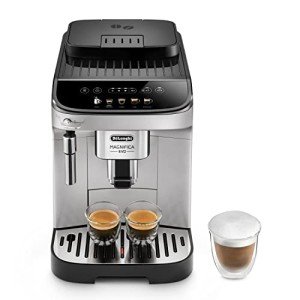5 Tools That Everyone Working In The Compact Bean To Cup Coffee Machine Industry Should Be Utilizing

Bean To Cup Espresso Coffee Machine: The Ultimate Guide
Over the last few years, the coffee culture has experienced a considerable transformation, with the rise of home developing gadgets supplying convenience and quality equivalent to café offerings. Amongst these devices, the Bean to Cup Espresso Coffee Machine stands out as a preferred among coffee connoisseurs and casual drinkers alike. This comprehensive guide explores what these machines are, how they work, the benefits they provide, and factors to consider when picking the best one.
What is a Bean to Cup Espresso Coffee Machine?
A Bean to Cup Espresso Coffee Machine is an advanced coffee developing device that grinds coffee beans fresh for each cup, automating the entire espresso-making process. These machines generally feature built-in mills, integrated milk frothers, and accurate developing innovation, allowing users to produce top quality espressos, lattes, cappuccinos, and more, all from the convenience of their homes. The benefit, coupled with the rich and robust flavors produced, has actually made these machines increasingly popular.
How Does It Work?
The fundamental operation of a Bean to Cup Espresso Coffee Machine can be broken down into a number of crucial actions:
Bean Grinding
- The machine grinds whole coffee beans right away before developing, making sure maximum freshness and flavor retention.
Developing
- Ground coffee is loaded into a filter, and warm water is forced through the coffee grounds at high pressure, which is vital for developing espresso.
Frothing (Optional)
- Many models include a steam wand or milk frother for preparing frothed milk for lattes and cappuccinos.
Serving
- The last involves giving the brewed coffee into a cup, often with programmable functions for personalization.
Advantages of Bean to Cup Espresso Machines
Buying a Bean to Cup Espresso Coffee Machine offers many benefits, adding to its growing popularity.
| Benefit | Description |
|---|---|
| Convenience | One-touch operation decreases the time and effort needed to prepare coffee. |
| Quality | Newly ground beans cause a richer, more delicious drink compared to pre-ground options. |
| Modification | Users can adjust settings to fit individual preferences, including grind size, coffee strength, and milk froth levels. |
| Cost-Effective | Although the initial investment may be high, cost savings on coffee purchases from cafés can be significant in time. |
| Adaptability | The capability to brew various coffee types, from espresso to cappuccino, broadens the machine's appeal. |
Secret Features to Look For
When picking a Bean to Cup Espresso Coffee Machine, numerous functions can influence the purchase decision. Below are important aspects to consider:
Grinder Type
- Burr grinders are chosen over blade grinders for their constant grind size.
Developing Pressure
- Try to find machines that provide a minimum of 15 bars of pressure for optimum espresso extraction.
Milk Frother
- Pick in between manual steam wands or automatic milk frothers based on choices for milk texture and foam.
User Interface
- An user-friendly control board with programmable settings boosts the overall experience.
Size and Design
- Consider the countertop area offered and pick a design that complements your kitchen visual appeals.
Upkeep Options
- Some machines offer automatic cleansing cycles, which can conserve time and effort in maintenance.
Popular Bean to Cup Espresso Machines
Choosing a machine that fits one's requirements can be difficult. Below is a list of popular models, known for their reliability and efficiency.
| Design | Secret Features | Cost Range |
|---|---|---|
| De'Longhi Magnifica ESAM3300 | Adjustable coffee strength, compact style | ₤ 550 - ₤ 700 |
| Breville Barista Touch | Touchscreen controls, integrated cone-shaped burr grinder | ₤ 800 - ₤ 1,150 |
| Saeco PicoBaristo | Automatic milk frother, 12 coffee specialties | ₤ 900 - ₤ 1,300 |
| Jura E8 | Pulse Extraction Process, Alexa Compatible | ₤ 1,800 - ₤ 2,500 |
| Gaggia Anima | Easy to clean, programmable settings | ₤ 500 - ₤ 800 |
Maintenance Tips
Keeping a Bean to Cup Espresso Coffee Machine in great condition is necessary for guaranteeing durability and ideal efficiency. Here are some maintenance tips:
- Regular Cleaning: Clean the machine's parts regularly, including the drip tray, coffee premises container, and water tank.
- Descaling: Perform descaling every few months based upon water hardness and use to prevent mineral buildup.
- Change Water Filter: If the machine has a water filtering system, change the filter as advised.
- Check Seals and Gaskets: Check for wear and tear to avoid leaks and ensure proper pressure throughout developing.
Frequently asked questions
1. Are Bean to Cup Espresso Machines simple to use?Yes, the majority of models are designed for user convenience with easy control board and one-touch operation. 2. Can I utilize pre-ground coffee in these machines?While some machines enable for using pre-ground coffee, the primary advantage lies in using whole beans for fresh grinding. 3. How frequently ought to I clean my Bean to Cup machine?Regular upkeep is key; daily cleaning of removable parts and descaling every 2-3 months are normally recommended. 4. What is the typical
life expectancy of a Bean to Cup Espresso Coffee Machine?With appropriate upkeep, these machines can last anywhere from 5 to 15 years based upon use quality
. 5. Are Fresh Bean Coffee Machine ?Though they can be pricey, the benefit, quality coffee production, and long-term savings make them a worthwhile financial investment for numerous coffee enthusiasts. Purchasing a Bean to Cup
Espresso Coffee Machine can considerably enhance the home
coffee experience. By supplying newly brewed, premium coffee, these machines accommodate the growing need for café-style beverages in the convenience of one's cooking area. With many choices on the marketplace, comprehending functions and individual choices will help in selecting the best machine to suit any coffee enthusiast's requirements.

